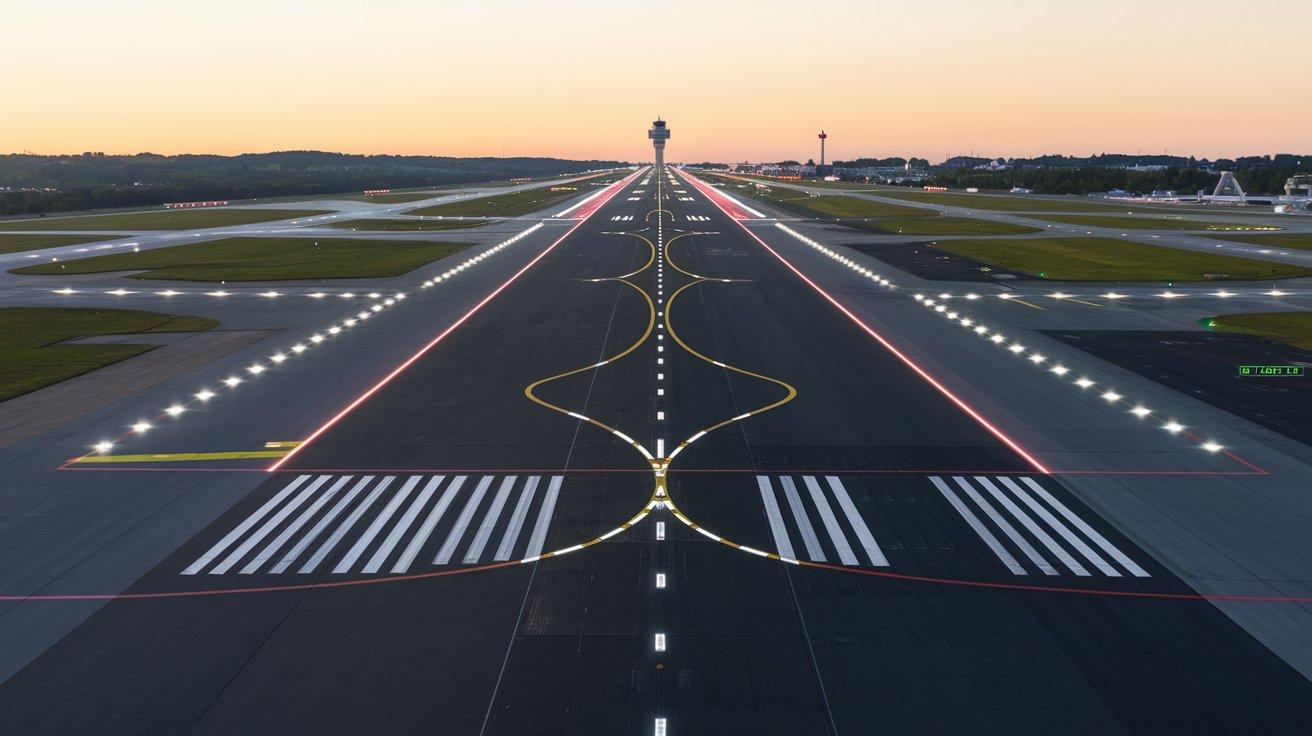In modern aviation, ensuring optimal visibility and safety is paramount. Runway lighting plays a crucial role in guiding aircraft during takeoff, landing, and taxiing. Traditionally, airports relied on incandescent lighting systems, but with technological advancements, Light Emitting Diodes (LEDs) have revolutionized airfield illumination. The adoption of LED technology has significantly improved efficiency, visibility, and sustainability in runway lighting.
The Evolution of Runway Lighting
For decades, incandescent lights were the standard for runways, taxiways, and approach paths. While they provided the necessary illumination, their drawbacks included high energy consumption, frequent maintenance, and short operational lifespans. These inefficiencies prompted the aviation industry to seek more sustainable and cost-effective alternatives.
The transition to LED lighting marked a major shift. LEDs consume far less energy, last significantly longer, and offer superior brightness and visibility. Airports worldwide have been upgrading their lighting systems to incorporate LED technology, improving both operational efficiency and environmental sustainability.
Benefits of LED Runway Lighting
1. Energy Efficiency
One of the primary advantages of LED runway lighting is its energy efficiency. Compared to traditional incandescent bulbs, LEDs use up to 75% less electricity. This reduction in energy consumption translates into lower operational costs and a smaller carbon footprint, making airports more sustainable.
2. Enhanced Visibility and Safety
LED lights provide a sharper, more focused illumination, ensuring better visibility for pilots in all weather conditions. They produce uniform lighting with reduced glare, which is essential for night operations and low-visibility scenarios such as fog, rain, or snow. Enhanced visibility directly contributes to safer takeoffs, landings, and taxiing operations.
3. Longer Lifespan and Durability
Unlike incandescent bulbs, which require frequent replacements, LEDs have a significantly longer lifespan, often lasting up to 50,000 hours or more. This durability reduces maintenance requirements, minimizing disruptions to airport operations and lowering overall maintenance costs.
4. Lower Heat Emission
Traditional runway lighting generates substantial heat, leading to increased energy wastage and potential damage to fixtures over time. LED lights, on the other hand, operate at much cooler temperatures, improving efficiency and reducing the risk of overheating-related failures.
5. Environmental Sustainability
The aviation industry is increasingly focusing on reducing its environmental impact. LED runway lighting aligns with this goal by reducing energy consumption, cutting carbon emissions, and minimizing light pollution. Additionally, LEDs do not contain hazardous materials like mercury, making them an eco-friendly choice.
Applications of LED Lighting in Airfields
1. Runway Edge and Centerline Lights
LEDs are used for marking runway edges and centerlines, providing clear guidance for pilots during takeoff and landing. The intense brightness of LED lights ensures visibility even in adverse weather conditions.
2. Taxiway Lighting
Taxiways connect the runways to terminals and hangars, and proper lighting is essential for safe aircraft movement. LED taxiway lights, typically blue and green, enhance guidance and help pilots navigate efficiently.
3. Approach and Threshold Lighting
These lights play a crucial role in ensuring safe landings by illuminating approach paths and runway thresholds. LEDs offer precise and consistent illumination, helping pilots align accurately during landing.
4. Apron and Ramp Lighting
Airports require bright and reliable lighting in apron and ramp areas for safe ground handling operations. LED floodlights provide high-intensity, glare-free illumination, improving visibility for ground crews and enhancing security.
Smart Monitoring and Control
The integration of LED lighting with advanced monitoring and control systems has further transformed airfield lighting. Solutions like Omni Site Runway Lighting offer remote monitoring capabilities, allowing real-time tracking of lighting performance. These systems can detect faults, optimize energy consumption, and provide automated alerts, ensuring that any issues are addressed promptly.
The Future of LED Runway Lighting
As technology continues to evolve, LED lighting in aviation is expected to become even more advanced. Emerging trends include:
1. Intelligent Lighting Systems
Future airport lighting systems will incorporate AI-driven solutions to adjust brightness and color based on real-time weather conditions and traffic patterns. This smart adaptation will enhance visibility while optimizing energy use.
2. Solar-Powered LED Lighting
With the push for greener energy solutions, solar-powered LED runway lights are gaining traction. These systems harness solar energy, further reducing electricity dependence and promoting sustainability.
3. Adaptive Lighting for Different Operations
Next-generation LED systems will feature adaptive lighting modes that adjust illumination intensity based on aircraft movement and operational needs, improving efficiency and extending the lifespan of the lights.
Conclusion
The adoption of LED technology in runway lighting has transformed airfield operations by enhancing visibility, improving safety, and reducing energy consumption. As airports worldwide continue to upgrade their lighting systems, LEDs are proving to be a game-changer in aviation infrastructure. The future of runway lighting will see further advancements, ensuring that air travel remains safe, efficient, and environmentally responsible.

